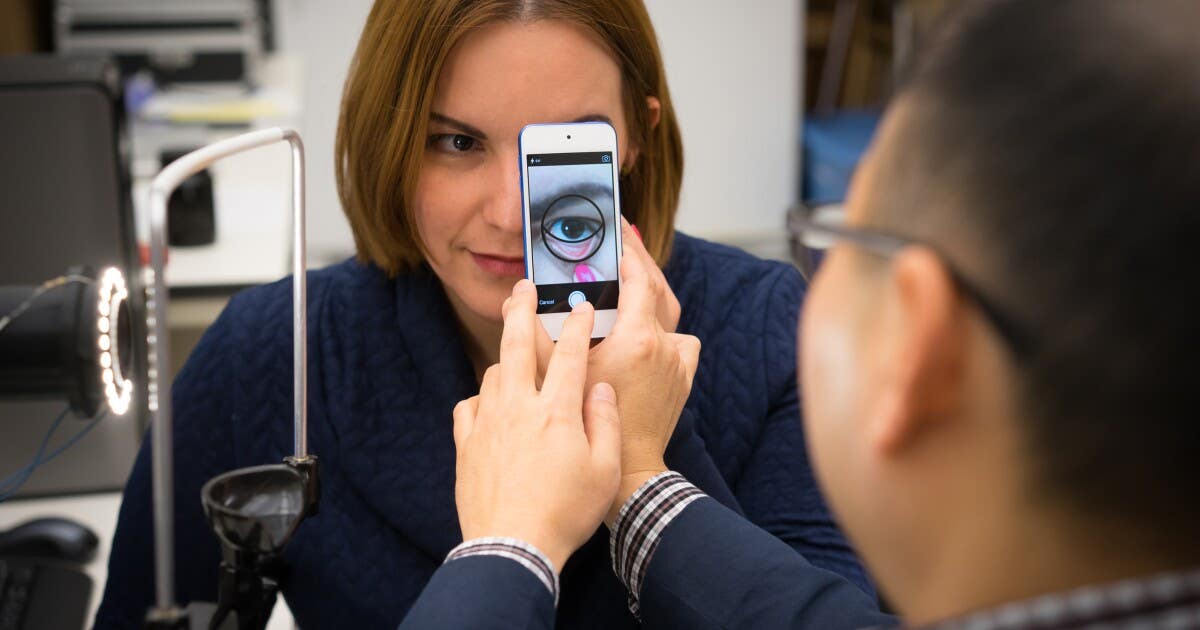Simple smartphone photo of the eye helps detect anemia in children
A simple smartphone photo of the eye could help detect anemia in children, offering a fast, low-cost tool for global health screening.

A new smartphone anemia detection method uses eye photos to quickly and affordably screen for anemia in children. (CREDIT: Vincent Walter)
Anemia is still one of the most common health problems in the world, affecting about two billion people. For school-age children, especially in lower-income areas, the stakes are high. When anemia goes undetected, it can slow growth, weaken muscles, and limit the brain’s ability to process information. That’s why spotting it early can change lives. The problem? In many regions, the tools for diagnosis are hard to find.
Current tests for anemia often depend on drawing blood and sending it to a lab. This process needs trained staff, special equipment, and sometimes days of waiting. In rural clinics or schools, these resources are rarely available. Even visual checks for anemia, such as looking for paleness in the inner eyelid, usually require advanced color-measuring tools or specialized imaging devices—not exactly items you’d expect to find in a small village health post.
A recent study published in Biophotonics Discovery may have found a simpler way forward. Instead of focusing on color, researchers explored the structure and texture of tiny blood vessels in the eye’s conjunctiva—the inner eyelid and part of the eye’s surface. And they did it with nothing more than standard smartphones and some clever software.
From Photos to Patterns: A Different Way to Spot Anemia
The team, from Purdue University, the Rwanda Biomedical Center, and the University of Rwanda, collected over 12,000 eye photos from 565 children aged 5 to 15. The photos were all taken in grayscale, meaning they captured only light and shadow—not color. This might sound like a disadvantage, but it turns out it was key to the new approach.
By focusing on shapes, lines, and textures in the blood vessels rather than their redness, the scientists avoided one of the biggest headaches in remote medical photography: inconsistent lighting and camera quality.
“Unlike previous efforts that rely on color analysis or special imaging tools, this method doesn’t require color data,” said first author Shaun Hong, a PhD student at Purdue. “It uses black-and-white photos to examine tiny structural changes in the eye’s blood vessels. This approach avoids problems caused by different light conditions or camera models, making it more practical for use in a variety of settings.”
Related Stories
- New $3 blood test transforms how cancer is detected and monitored
- Kidney transplant patients could live drug-free thanks to new stem cell therapy
The analysis used a technique called radiomics. Normally applied in medical imaging like CT or MRI scans, radiomics looks at subtle spatial patterns in tissue. Here, it measured how the eye’s blood vessel networks were arranged and how their textures varied. Those patterns were then fed into machine learning algorithms that learned to separate the eye images of children with anemia from those without it.
Why This Matters for Global Health
The study’s findings showed a strong link between certain conjunctiva structural features and anemia status. In practice, this means a trained health worker or school nurse with a smartphone could capture an eye image. They could run it through simple software and receive a quick, noninvasive anemia risk assessment. No needles, no lab wait times, and no expensive hardware are required.
In areas where anemia screening is rare, this tool could open important new possibilities. For schools, it could help spot children with fatigue, poor focus, or developmental delays before severe effects occur. In rural clinics, it could guide decisions about iron supplements, dietary changes, or further testing.
This is not only about convenience. Early anemia detection can prevent complications like heart strain, immune system problems, and long-term learning delays. Because the method avoids color-based analysis, it may be more reliable across skin tones, camera models, and lighting conditions. This overcomes a long-standing challenge for medical image processing.
How This Technology Could Spread
For now, the research remains in the testing stage, and larger studies will be needed before the method is rolled out widely. But the concept is highly adaptable. The fact that it works with off-the-shelf smartphones makes it attractive for non-governmental organizations, rural health systems, and even schools.
If paired with an easy-to-use app, the system could automatically process the image and give a simple result—low, moderate, or high risk of anemia. Health workers could then decide whether further action is needed. Since the software uses grayscale images, data file sizes are smaller, making it easier to store and share results even in places with limited internet bandwidth.
While this study focused on children in Rwanda, the same approach could be tested in adults, pregnant women, or other high-risk groups. The principles are the same: use accessible technology to capture a clear, close-up view of the eye’s blood vessel structures, then let trained algorithms do the analysis.
A Step Toward Smarter, More Accessible Screening
The potential of this method lies not just in its accuracy but also in its simplicity. You could take the photo with a phone you already own. The software could be added as a standard tool in community health programs. And with proper safeguards, the data could feed into public health tracking systems to monitor anemia rates in real time.
It’s worth remembering that no screening method replaces a full medical diagnosis. But for communities that now have no regular screening at all, even a quick risk check could mean earlier treatment and better outcomes. This is where science meets practicality—and where a device in your pocket might one day help protect millions of young lives.
Note: The article above provided above by The Brighter Side of News.
Like these kind of feel good stories? Get The Brighter Side of News' newsletter.



